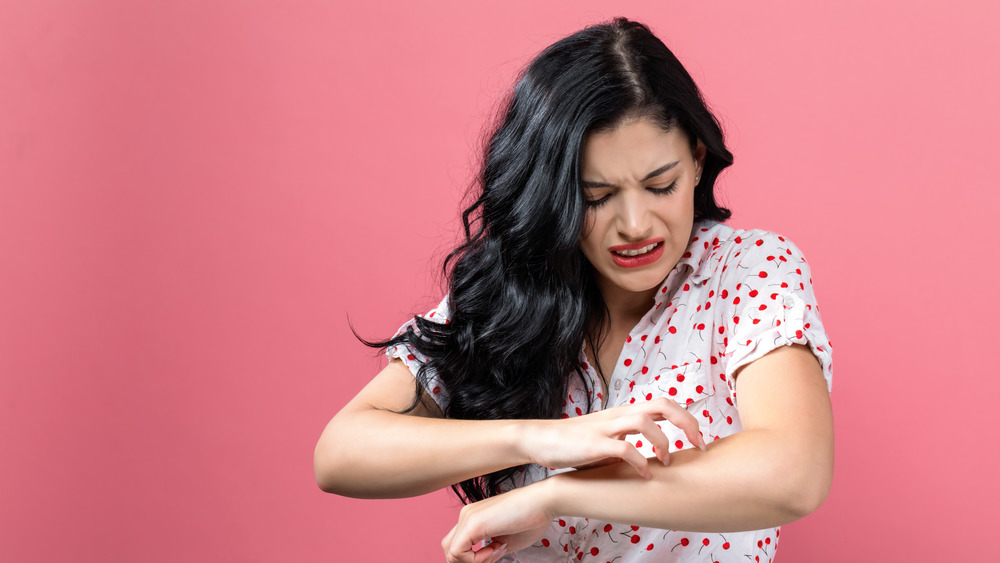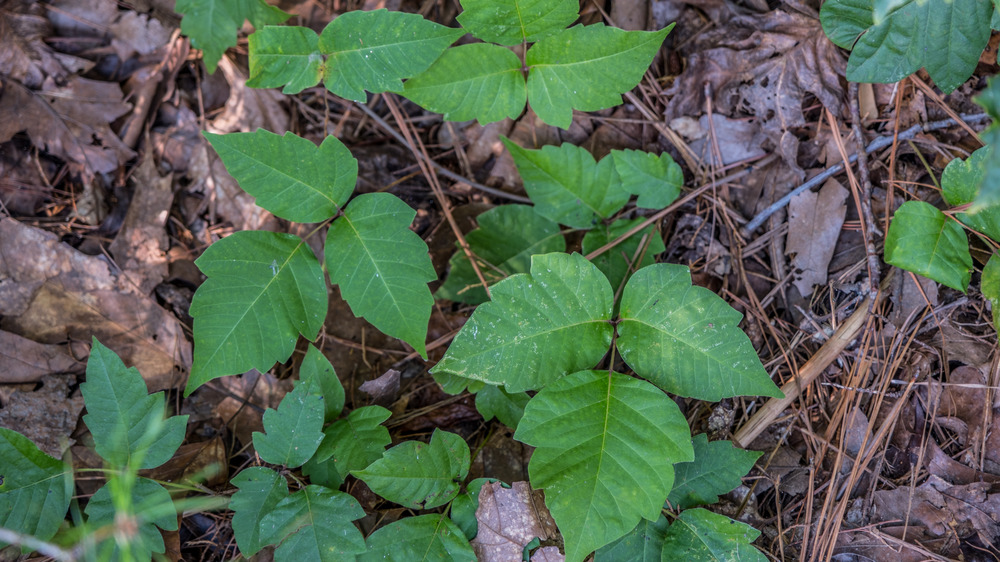The Best Ways To Get Rid Of Poison Ivy
Poison ivy is a common plant that is native to America (via Johns Hopkins Medicine). These itch-inducing plants can be found throughout the United States, except for Alaska and Hawaii, according to the Centers for Disease Control and Prevention (CDC). Anyone who works or spends time outside may come into contact with them. In addition to poison ivy, other poisonous plants include poison oak and poison sumac. These plants produce an oily sap that causes an allergic reaction in most people who come in contact with them in the form of an itchy, irritating rash. Up to 90 percent of people who are exposed to poison ivy will have this reaction, according to the Cleveland Clinic.
Most cases of poison ivy can be treated at home. The most important thing to do when you've been exposed to poison ivy is to immediately rinse skin with lukewarm, soapy water, according to the American Academy of Dermatology (AAD). This can help rinse off the oily sap. If not rinsed off, the oil can spread to other parts of the body — or even to other people. Clothing and any other surfaces that may have come in contact with the plant, such as gardening tools, golf clubs, and pet leashes, should also be thoroughly washed.
Home remedies to treat poison ivy
Short, lukewarm baths with a half cup of baking soda or an oatmeal-based bath product can help relieve symptoms of itchiness and irritation associated with poison ivy rash (via Mayo Clinic). An over-the-counter cortisone cream should be applied for the first few days. Cool, wet compresses placed over the affected areas for 15 to 30 minutes can also be soothing. This can be done several times a day. Additionally, oral antihistamines, such as diphenhydramine (Benadryl), can ease symptoms and can help you sleep. Avoid scratching the rash and leave blisters alone, as this may cause infection.
If the rash has not improved after seven to 10 days, see a board-certified dermatologist, as it may be infected. If you experience any of the following symptoms, go to an emergency room immediately: difficulty breathing or swallowing, fever, a rash on most of the body, a rash around one or both eyes, mouth, or genitals, swelling on the face, especially if it causes an eye to swell shut, or itching that worsens or makes it impossible to sleep. These symptoms signify a severe allergic reaction and require immediate care.


